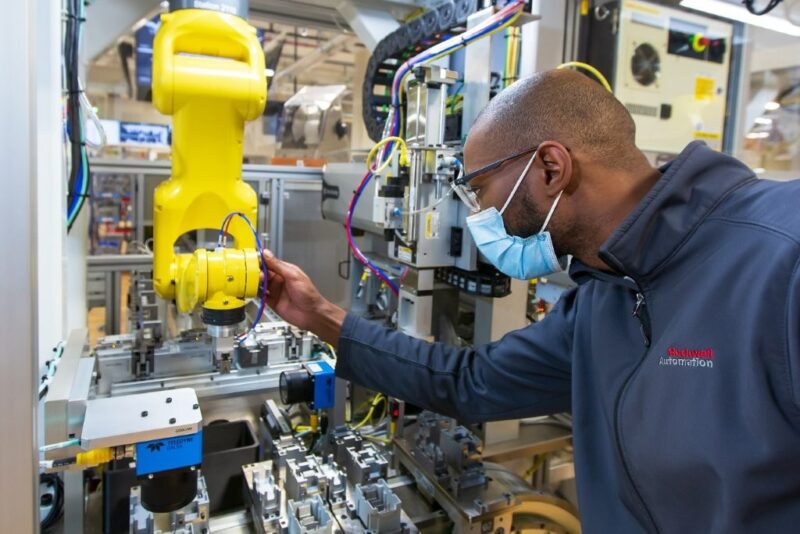Manufacturing bottleneck: How Auckland’s land crunch threatens growth
From NZ Manufacturer magazine, February 2025
By Mark Devlin, Managing Director, Impact PR
Auckland is the industrial heart of New Zealand, but an emerging scarcity of industrial-zoned land is poised to have far-reaching implications for the manufacturing sector. As businesses increasingly seek larger, purpose-built facilities to house state-of-the-art technology and automated processes, the land supply constraints could prevent growth and innovation in one of the country’s most essential industries.
Manufacturing Under Pressure
New Zealand’s manufacturing sector, which contributes over 10% to GDP and employs more than 240,000 people, is under increasing pressure to modernise and scale up. Global trends in automation, robotics, and smart logistics demand facilities that are capable of supporting high ceilings, expansive footprints, and advanced connectivity.
Stephen Hughes, CEO of Drury South Crossing—New Zealand’s largest mixed-use property development—says that half of the second phase of their industrial development has already been sold. Manufacturing companies and industrial operators are vying for what remains of the land, recognising the unique advantages that sites like Drury offer.
According to Hughes, “Large-scale manufacturing facilities require contiguous greenfield sites with close access to major transport arteries like motorways and rail. The diminishing availability of such land in Auckland is beginning to limit the options for industrial expansion.”
Automation Driving Land Demand
A major shift in the manufacturing sector is the adoption of Automated Storage and Retrieval Systems (ASRS) and other advanced technologies. These systems optimise operations by automating warehousing processes, reducing labour costs, and improving efficiency. However, the infrastructure for such systems cannot simply be retrofitted into existing warehouses; they demand purpose-built facilities with ceilings as high as 30 metres and footprints of two hectares or more.
Ben Stewart, Associate Director of Property at Calder Stewart, explains that Auckland’s geography and regulatory landscape are significant obstacles. “The region is constrained by natural barriers, including internal waterways and hilly terrain, as well as policy-driven limits on rezoning arable land. The availability of contiguous industrial-zoned land with favourable ground conditions is increasingly scarce,” Stewart says.
Manufacturers and distributors looking to consolidate operations into single, efficient hubs—similar in size to Briscoes’ planned $100 million 3.2-hectare distribution centre at Drury South Crossing—are now realising that opportunities to secure such sites are limited.
Energy Demands Adding Complexity
The rise of energy-intensive industries, such as data centres and high-tech manufacturing, adds another layer of complexity to the equation. At Drury South Crossing, over $30 million has been allocated to building a 60MW substation to future-proof the site’s energy supply. Hughes says “This facility will be one of Auckland’s largest, capable of powering the equivalent of 45,000 homes. Such investments are critical to supporting the next generation of industrial users, including manufacturers integrating AI and advanced robotics into their operations.”
However, this level of investment underscores the cost barriers that smaller manufacturers might face. Without access to well-resourced industrial hubs like Drury, smaller players may struggle to remain competitive in a global market increasingly defined by automation and efficiency.
The Economic Ripple Effect
The industrial land shortage in Auckland has implications far beyond manufacturing. The lack of suitable sites may stymie growth in associated sectors such as logistics, warehousing, and even retail. Manufacturers unable to expand domestically might look offshore, taking jobs and investment with them.
As Auckland continues to grow, the competition for land will intensify. Stats NZ recently reported that Auckland’s population is projected to reach two million by 2030, adding further pressure on infrastructure and land resources.
The Need for Investment in Transport Infrastructure
Hughes says there is a growing need to invest in critical roading infrastructure in the region to support Auckland’s manufacturing and logistics sectors.
He highlights the proposed Mill Road project as an essential initiative to strengthen Auckland’s transport resilience and ensure better connectivity between the city and the Waikato.
“This type of infrastructure is vital for enabling the efficient movement of goods and services, particularly for businesses operating in South Auckland and the Waikato region.
“By providing an alternative to heavily congested routes like State Highway 1, Mill Road would reduce travel times, lower freight costs, and improve supply chain reliability—key factors for the region’s economic growth,” Hughes says.
Opportunities for Innovation
Despite these challenges, the situation presents opportunities for innovation within the manufacturing sector. Businesses can explore solutions such as:
- Vertical Integration: Maximising the use of smaller land parcels by building upward with multi-level facilities.
- Decentralisation: Expanding operations to regions with more available land, such as Waikato or Bay of Plenty, while leveraging improved transport links to Auckland.
- Collaboration: Sharing resources such as energy infrastructure and logistics hubs within industrial clusters like Drury South Crossing.
Technology will also play a role in mitigating land scarcity. The rise of additive manufacturing (3D printing) could enable smaller, decentralised production sites, reducing the need for massive industrial facilities.
A Call for Strategic Planning
To ensure the continued growth of New Zealand’s manufacturing sector, policymakers and industry leaders must address the industrial land shortage with urgency. This includes:
- Proactive Rezoning: Identifying areas where industrial land can be expanded without compromising environmental or agricultural priorities.
- Incentivising Innovation: Providing grants or tax incentives for manufacturers adopting space-saving or sustainable technologies.
- Future-Proofing Infrastructure: Investing in power, transport, and connectivity to attract high-tech industries.
The industrial land shortage in Auckland is not just a real estate issue—it is a strategic challenge that will shape the future of New Zealand’s manufacturing sector. As global competition intensifies and technological demands increase, businesses must adapt quickly to remain competitive. Developments like Drury South Crossing offer a glimpse of what’s possible when long-term planning and investment align with industry needs.
However, the question remains: will Auckland’s manufacturing sector seize these opportunities, or will the constraints of geography and planning hold it back? With collaboration between government, industry, and innovators, the potential to thrive in the face of this challenge is well within reach.



